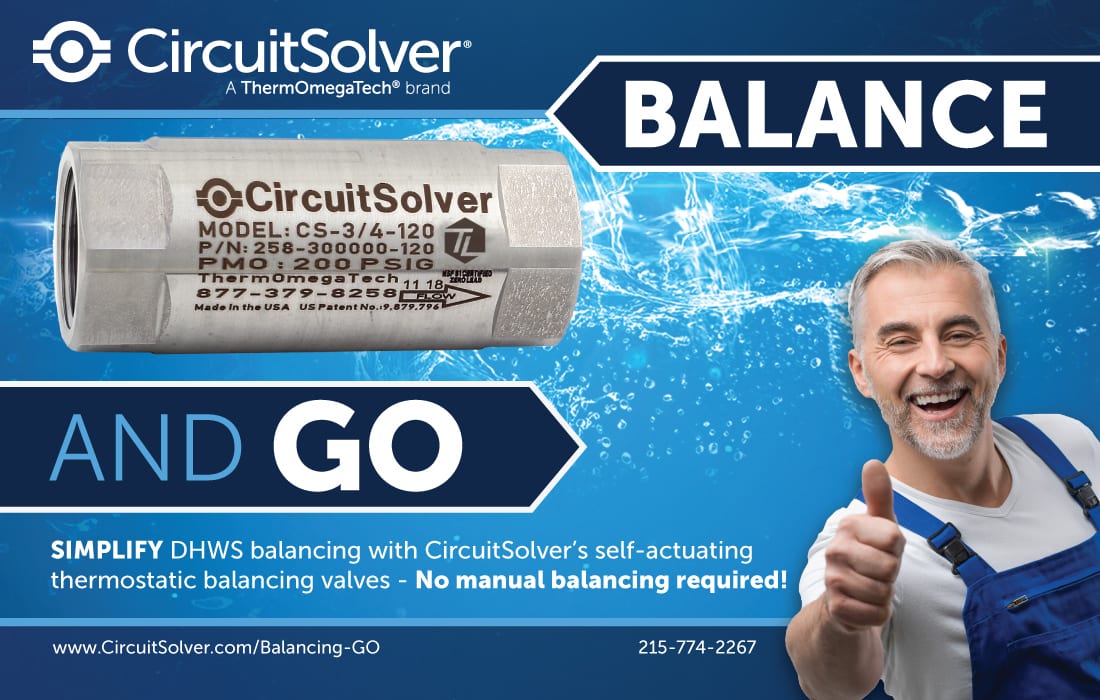
CONTRACTOR’S CORNER
BY DAVE YATES

Want to make more money?
Invest in yourself and your future by adding to your knowledge base.
How can you increase your profits? When I ask this, I don’t mean marginally. Back when I was a younger buck and feeling pretty sure about how to design/install PHVAC systems, I attended dozens — if not hundreds — of seminars put on by manufacturers. Unfortunately, far too many were little more than promotion of their products with a smattering of education thrown in to somewhat quench your thirst for knowledge.
I was overly confident my skillset in hydronics was rock-solid. Back then, there were no computers, smartphones or the internet. Manual-J heat loss/gain calculations were done by hand, and could easily take hours to complete. As a result, we did them only when we weren’t confident of the outcome and, no doubt, oversized boilers were common.
Fast-forward to the early days of the internet and bulletin boards where mechanical contractors hung out. A good friend of mine, Gary Hayden, who, at the time, was an engineer at Burnham, posed a question: “How would you provide air conditioning for a radiantly heated addition with no attic or crawl space for ductwork?” I replied that in my past experience with slab-on-grade additions (not radiantly heated), we ran the ducts below grade in 6-inch SDR PVC because the earth’s temperature was a pretty perfect match for the cooled air being supplied, therefore ensuring no internal condensation.
Hayden asked me to meet with him, at which time he revealed this was for his boss’s home. Long story short, we bid and were awarded the job. Following completion, Hayden (strongly) urged me to join the RPA (Radiant Panel Association, which later morphed into the Radiant Professionals Alliance). I figured that would be a waste of time and money and said no — repeatedly. Hayden further urged me to submit the installation for the RPA Showcase juried awards competition. Now, fully intimidated by the prospect of having peers within the hydronics industry scrutinizing my work had me running in the opposite direction! Hayden pretty much had to hit me over the head with a 2x4 until I finally caved, joined the RPA and submitted our project for the System Showcase competition. The RPA convention was to be held in Providence, Rhode Island. As I would find out later, John Siegenthaler (affectionately known as Siggy) was one of the System Showcase judges.
Lois and I arrived at the RPA convention, and we each had selected various classes to attend: Lois was off to attend one of Ellen Rohr’s classes regarding how to best manage the financials for mechanical contracting firms; and I was headed to a hydronics class taught by Siggy. I was a little late as class had already started, but Siggy noted everyone should have a copy of the book he had provided, which were in a box by the entrance. I noticed the character standing to my left had on some pretty wild-looking cowboy boots with a boldly colorful design. As I reached into the box for one of Siggy’s books, cowboy boots said: “You can’t have one because you’re late!” And that’s how I met Ellen’s husband Bob “Hotrod” Rohr! I headed to the front row because I have always learned more sitting up front.
Unless you have been living in a cave, you are at least aware of hydronic cooling derived from geothermal heat pumps. What you may not be up to speed on are inverter-driven air-to-water heat pumps whose efficiencies rival those of geothermal systems — without the expense of boreholes or wells. Want to know how to size these air-to-water mini-split heat pumps? It’s inside the book.
The epiphany: You ever have one of those events where you think you know a subject well, only to be brought up short while finding you hardly know anything? That was that moment!
Siggy doesn’t waste any time stripping away layers to get to the meat-on-the-bones of hydronics, and the audience was captivated. While that was pretty humbling, it was also fun to understand there was so much to learn — way beyond my then current skillset and thus began my educational journey via the RPA. As my knowledge increased, so did my skillset, and our company's bottom line where profits are concerned increased exponentially. We stopped being a commodity where price was the main customer consideration and began taking work away from our competitors while, often, having the highest price. Our reputation was greatly enhanced and customer referrals increased.
The RPA convention (the first of many we attended) was outstanding on a number of fronts: It featured the best educational seminars I ever attended; we were able to meet new friends, many of which remain close friends and mentors today; and our System Showcase entry was an award winner. Every year our entries won awards and Larry Drake, who headed up the RPA at that time, asked me to become a System Showcase judge, which meant we could no longer enter a project into the competition.
When Siggy produced “Modern Hydronic Heating — First Edition,” I immediately purchased a copy. It was easily understood — even by thick-skulled folks like me — this became my go-to resource for all things hydronic. In my home office, my bookshelf has Siggy’s first three editions of “Modern Hydronic Heating.” They are now joined by Siggy’s Fourth Edition of “Modern Hydronic Heating & Cooling.” Each edition has tons of new information regarding new and emerging advances in the industry, and this Forth Edition is, in my opinion, his best work to date because it incorporates hydronic cooling systems.
Unless you have been living in a cave, you are at least aware of hydronic cooling derived from geothermal heat pumps. What you may not be up to speed on are inverter-driven air-to-water heat pumps whose efficiencies rival those of geothermal systems — without the expense of boreholes or wells. Want to know how to size these air-to-water mini-split heat pumps? It’s inside the book. In fact, pretty much anything you ever wanted to know regarding hydronic heating and cooling is inside the Fourth Edition. Chock-a-block full of crystal-clear illustrations aid your mind’s eye in being able to more fully grasp the concepts laid out within this “bible” on hydronics.
A Google search reveals multiple sites for purchasing this book. Invest in yourself and your future by adding this book to your knowledge base. Apply what you learn from Siggy, and all your competitors will see are your taillights! You might say “Hey Dave, why do you feel a need to have this Fourth Edition given that you sold your business and retired”? True, we did sell our business on Dec. 6, 2019, but I continued doing consulting work for PHVAC systems and need to stay relevant by keeping up with changes in technology.
Here’s what Barnes and Noble had to say about this Fourth edition by Siggy: “From simple applications to multi-load and multi-temperature systems, this one-of-a-kind, comprehensive text will prepare you to use the latest hydronics to create systems that deliver the ultimate in comfort, reliability and energy efficiency. Abundantly illustrated with product and installation photos and hundreds of detailed, full-color schematics, MODERN HYDRONIC HEATING, Fourth Edition, transforms engineering-level design information into practical applications useful for technical students and heating professionals alike. The revised edition features the latest design and installation techniques for residential and light commercial hydronic systems, including use of renewable energy heat sources such as air-to-water and geothermal heat pumps, hydraulic separation, variable speed circulators, distribution efficiency, heat exchangers, buffer tanks, heat metering, hydronic cooling, system balancing and proper system documentation. Equally well-suited for formal education courses, self-study or on-the-job reference, this preeminent resource of the North American heating industry is ideal for anyone involved in the heating trade.”

sarayut /iStock / Getty Images Plus via Getty Images
Dave Yates began his career in the PHCP-PVF trades in 1972 with F. W. Behler, a third-generation plumbing/HVAC firm he purchased in 1985. He can be reached at dyates@fwbehler.com.

